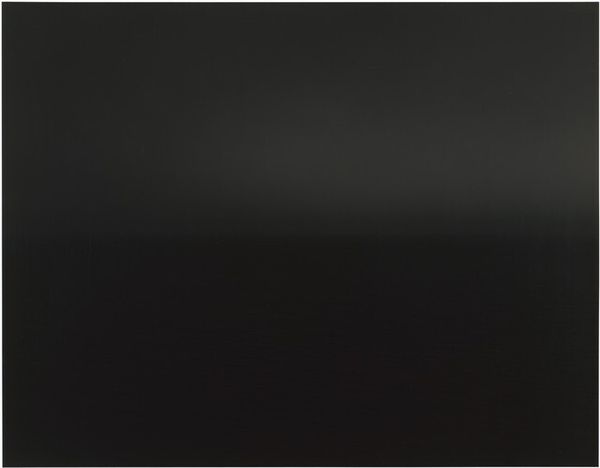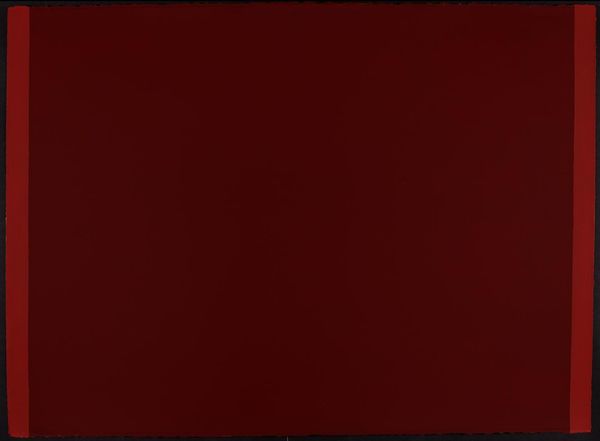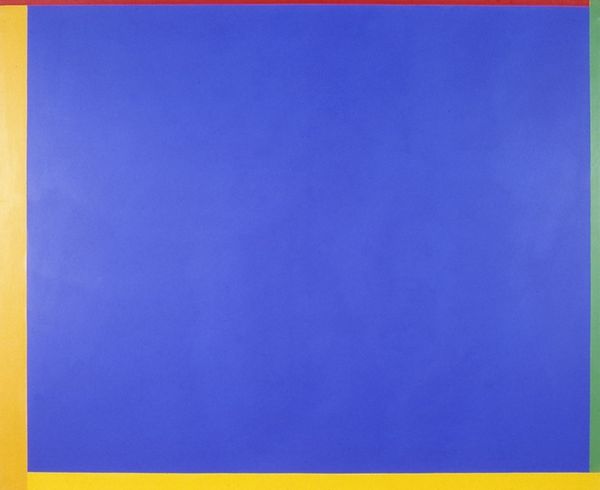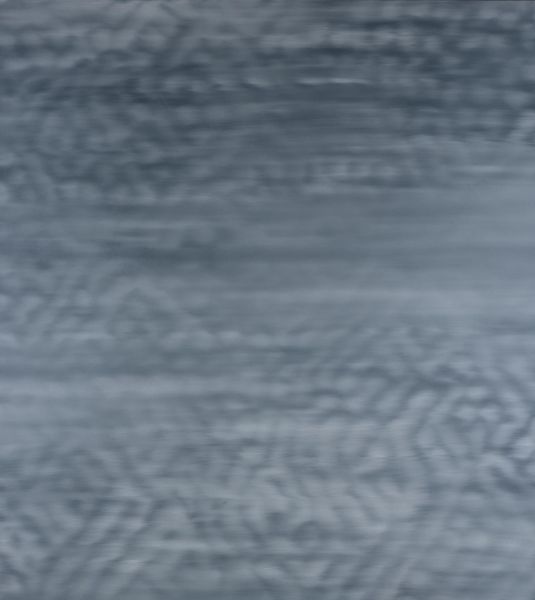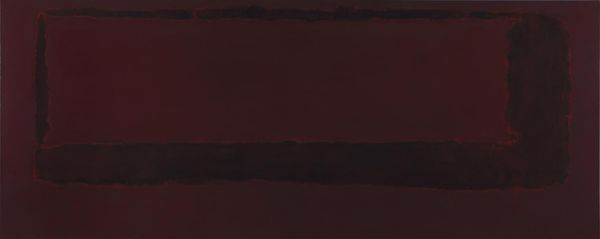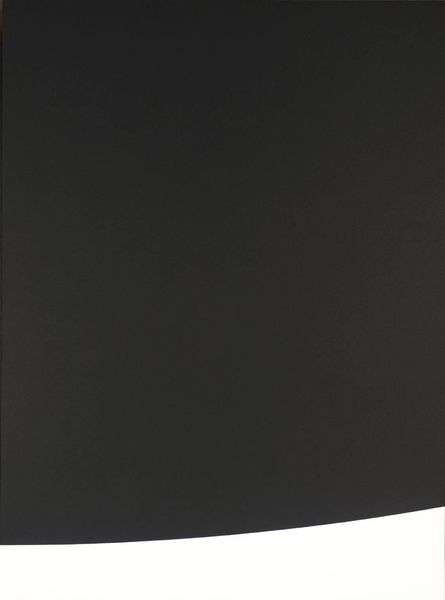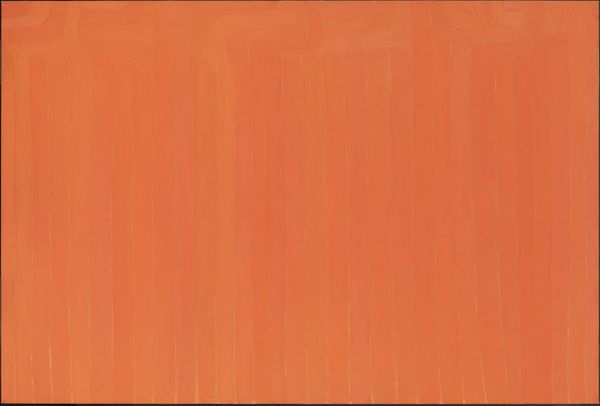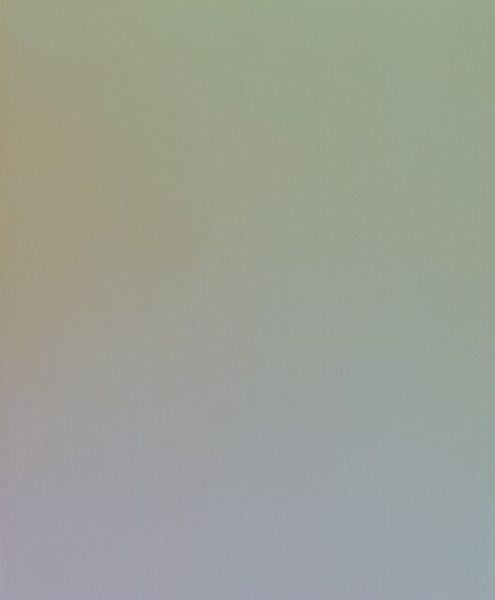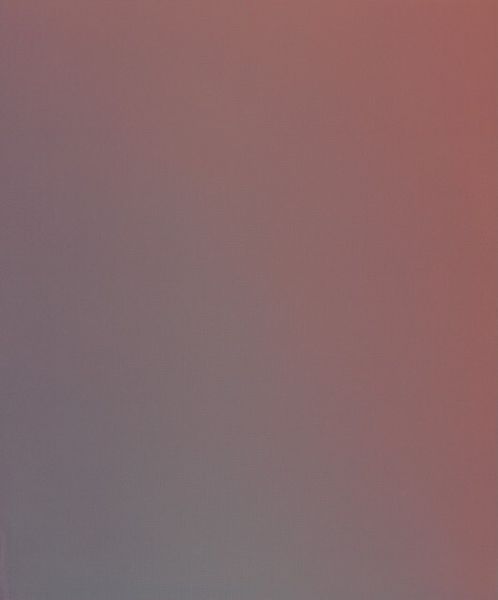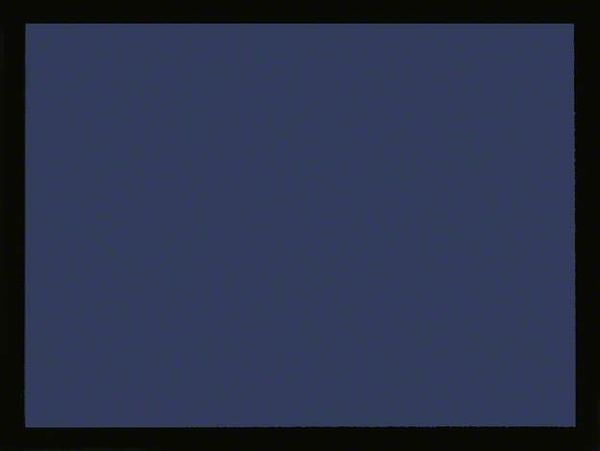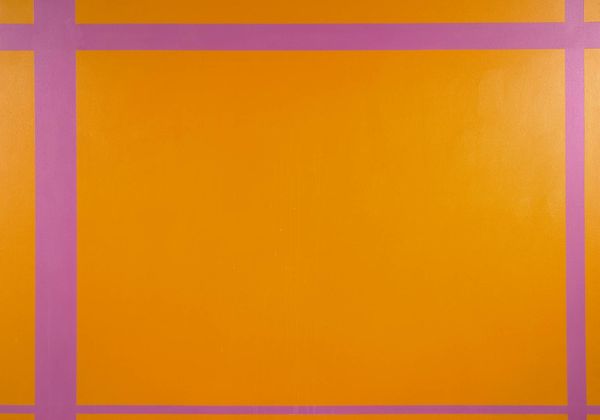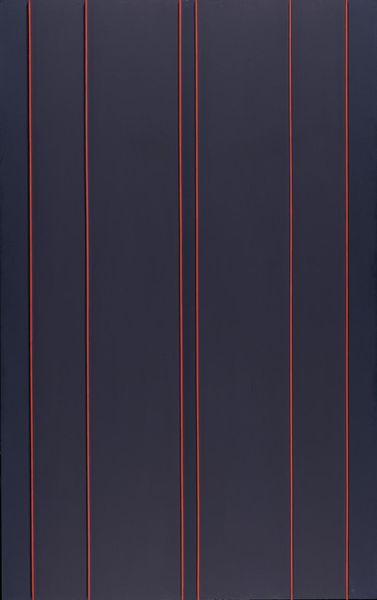
acrylic-paint
#
abstract-expressionism
#
abstract expressionism
#
non-objective-art
#
minimalism
#
acrylic-paint
#
form
#
geometric
#
line
#
abstract art
#
modernism
Dimensions: 239 x 193 cm
Copyright: Barnett Newman,Fair Use
Curator: This is Barnett Newman’s "Midnight Blue," painted in 1970, a powerful example of Abstract Expressionism currently residing at the Museum Ludwig in Cologne. What are your first impressions? Editor: Initially, it strikes me as austere and contemplative. The composition—a vast, deep blue field punctuated by linear elements—creates a powerful visual tension. It’s materially quite simple: just canvas and acrylic, yet so commanding. Curator: Indeed. Newman's work exists within the dialogue of post-war American identity, marked by a search for meaning in the wake of immense global trauma. He aimed to bypass traditional artistic subjects and, through pure abstraction, touch upon the sublime. How do you read those linear elements within that framework? Editor: The 'zips,' as he called them, are crucial. That white band on the edge, and the vibrant blue vertical line cutting through the darkness, act as structural counterpoints, preventing the canvas from becoming simply a void. They're signifiers, lines marking differences and challenging a monolithic interpretation. It’s almost semiotic, in its use of line as language. Curator: Precisely! Think about Newman's engagement with the concept of the "Other." The zips can be interpreted as boundaries, disruptions, or even points of connection, representing marginalized identities navigating oppressive spaces. "Midnight Blue" becomes a site for reflecting on power dynamics, a visual field of resistance and resilience. Editor: It's fascinating to consider the artwork beyond formal abstraction, interpreting these elements through the lens of identity. And yet, returning to form, notice how the texture of the acrylic paint affects our perception of depth? Curator: Absolutely. We see "Midnight Blue" speaking both to universal existential concerns and the specifics of social and political realities, its profound darkness reflecting both nothingness and infinite possibility. Editor: So, beyond that sublime affect, we are left with something more complex than pure aesthetics—a visual provocation as well as a deeply symbolic and critical space.
Comments
No comments
Be the first to comment and join the conversation on the ultimate creative platform.
